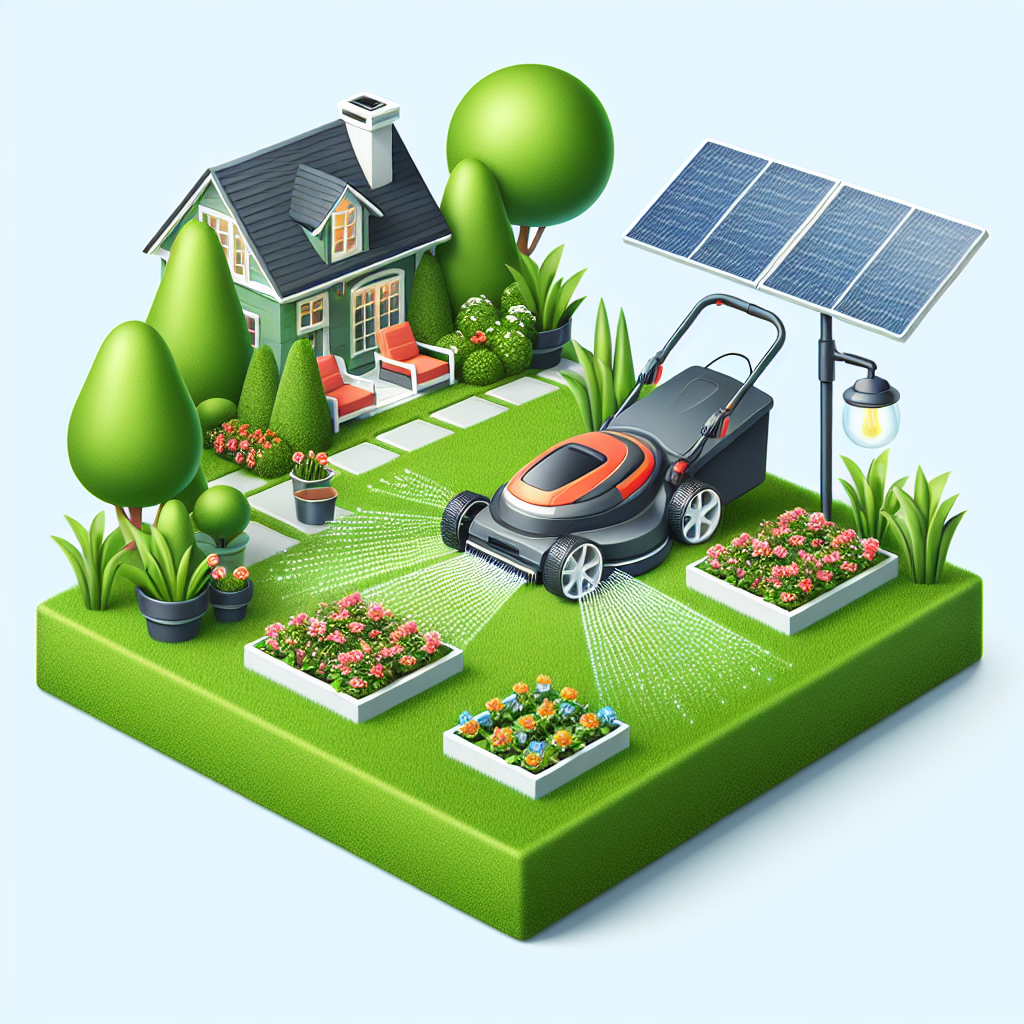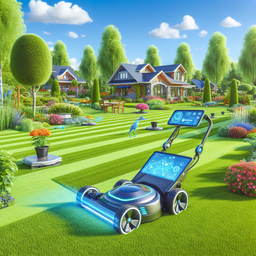Overview of Home Lawn Care
Maintaining a healthy and lush lawn requires a combination of proper techniques, regular maintenance, and a good understanding of lawn care principles. Homeowners often overlook critical aspects of lawn care, leading to issues such as patchy grass, weed infestations, or poor growth. In this comprehensive guide, we will explore the essential elements of home lawn care, from mowing and watering to fertilization and pest control.
Mowing Techniques for a Healthy Lawn
Industry experts emphasize the importance of proper mowing techniques for a healthy lawn. According to John Fech, an extension educator at the University of Nebraska-Lincoln, "Mowing at the correct height is critical to a healthy and attractive lawn." Cutting grass too short can stress the plants, making them more susceptible to diseases and drought.
Understanding and Implementing Proper Watering Practices
Proper watering is essential for maintaining a vibrant lawn. Overwatering can lead to fungal diseases, while underwatering can result in brown patches and weak root systems. The key is to water deeply and infrequently, ensuring that the soil is moist at a depth of 6-8 inches. Beth Guertal, a professor of agronomy at Auburn University, advises, "Water your lawn early in the morning to minimize evaporation and allow the grass to dry before nightfall."
Fertilization: Timing and Types of Fertilizers
Fertilization plays a crucial role in promoting healthy turf growth. Different types of fertilizers, such as slow-release or organic options, serve varying purposes in providing essential nutrients to the grass. Timing is also critical, with experts recommending fertilizing in the spring and fall for optimal results. Dr. Tony Koski, a turfgrass specialist at Colorado State University, recommends, "Know your soil type and test it to determine the right fertilization schedule for your lawn."
Weed Control Strategies
Weeds can quickly overrun a lawn if not properly managed. Integrated weed management techniques, including cultural, mechanical, and chemical control methods, can help keep weeds at bay without harming the grass. Dr. Aaron Patton, a professor of horticulture at Purdue University, suggests, "Preventative strategies like proper mowing height and dense turf can help discourage weed growth."
Diagnosing Common Lawn Problems
Identifying and addressing common lawn issues is crucial for maintaining a healthy turf. Problems like bare patches, discoloration, or thinning grass can signal underlying issues that need to be remedied. Dr. Alec Kowalewski, a turf specialist at Oregon State University, advises, "Take the time to diagnose the problem accurately before applying any treatments to ensure effective results."
Managing Lawn Pests: Identification and Treatment
Lawn pests, such as grubs, chinch bugs, or armyworms, can wreak havoc on a lawn if not dealt with promptly. Proper pest identification is the first step in determining the best treatment method. Dr. Adam Dale, an assistant professor of turfgrass entomology at the University of Florida, highlights, "Integrated pest management practices combine cultural, biological, and chemical controls to effectively manage lawn pests."
Aeration and Dethatching: Benefits and Methods
Aeration and dethatching are essential practices for maintaining a healthy lawn. These processes help alleviate compaction, improve soil aeration, and promote root growth. Dr. Ben McGraw, an associate professor of turfgrass science at Penn State University, explains, "Aerating allows water, air, and nutrients to penetrate the soil, promoting a healthier root system and overall turf vigor."
Spring Lawn Care: Essentials for a Vibrant Start
Spring is a critical time for preparing your lawn for the growing season. Tasks such as dethatching, overseeding, and applying pre-emergent herbicides can help kickstart healthy grass growth. According to Scotts Lawn Care, a leading lawn care company, "Proper spring lawn care sets the foundation for a beautiful and resilient lawn throughout the year."
Summer Lawn Care: Tips to Keep Your Lawn Lush and Green
Summer brings its own set of challenges for lawn care, including heat stress, drought, and increased pest activity. Adequate watering, mowing at the correct height, and monitoring for signs of pests and diseases are essential summer lawn care practices. The Lawn Institute recommends, "Adjusting your mowing and watering schedule to accommodate the summer heat can help keep your lawn healthy and vibrant."
Fall Lawn Care: Preparing Your Lawn for Winter
Fall is the time to prepare your lawn for winter dormancy and ensure its resilience for the following spring. Tasks like aerating, overseeding, and applying a winter fertilizer can help fortify the grass for the colder months. Dr. Frank Rossi, an associate professor of horticulture at Cornell University, advises, "Fall lawn care is critical for root development and storing energy for the winter ahead."
Winter Lawn Care: Protecting Your Lawn during the Cold Months
While grass goes dormant in winter, there are still steps homeowners can take to protect their lawn during the cold months. Avoiding foot traffic on frozen grass, clearing snow to prevent mold growth, and limiting de-icing salt use are crucial winter lawn care practices. The University of Illinois Extension recommends, "Minimize stress on your lawn during winter to ensure a healthy and robust lawn in the spring."
Eco-Friendly Practices for a Greener Lawn
Sustainability in lawn care is gaining importance as homeowners seek environmentally friendly solutions for their landscapes. Practices such as using organic fertilizers, reducing water usage, and planting native species contribute to a greener lawn. The National Association of Landscape Professionals states, "Embracing sustainable lawn care practices not only benefits the environment but also creates healthier and more resilient landscapes."
Xeriscaping: Drought-Resistant Lawn Alternatives
Xeriscaping offers an alternative to traditional lawn care by creating drought-resistant landscapes that require minimal water and maintenance. Incorporating native plants, mulching, and efficient irrigation systems are key components of xeriscaping. The Environmental Protection Agency recommends, "Xeriscaping is a water-efficient landscaping solution that can reduce water usage and maintenance costs while still providing an attractive outdoor space."
Successful Lawn Care Transformation: A Before and After
Case studies showcasing successful lawn care transformations can provide valuable insights into best practices and techniques for revitalizing a struggling lawn. From addressing soil compaction to implementing a tailored maintenance plan, these transformations demonstrate the positive impact of proper lawn care practices. The Lawn Institute highlights, "With the right strategies and commitment to ongoing maintenance, even the most challenging lawns can be transformed into vibrant and healthy landscapes."
Expert Tips for Reviving a Neglected Lawn
Experts in the field of turf management offer valuable tips for homeowners looking to revive a neglected lawn. Strategies such as soil testing, overseeding, and proper watering can help rejuvenate an ailing turf. Dr. Doug Soldat, a soil scientist at the University of Wisconsin-Madison, advises, "Start with a soil test to determine the nutrient needs of your lawn and devise a tailored care plan to restore its health and vigor."
Advice from Industry Professionals
Industry professionals provide valuable insights and advice on various aspects of home lawn care. From mowing and watering tips to pest management strategies and sustainable practices, experts offer guidance based on years of experience and research. According to Dr. Karl Danneberger, a professor of turfgrass science at The Ohio State University, "Continuous education and staying informed about the latest advancements in lawn care are essential for maintaining a beautiful and sustainable lawn."
Research Findings on Lawn Care Best Practices
Research in the field of turfgrass science continues to uncover new findings and best practices for home lawn care. Studies on water-efficient irrigation systems, integrated pest management techniques, and soil health indicators contribute to the development of sustainable lawn care strategies. The American Society of Agronomy emphasizes, "Research-driven practices are essential for improving turf performance and environmental stewardship in residential landscapes."
Summarizing the Essential Elements of Home Lawn Care
In conclusion, home lawn care encompasses a range of practices that are essential for maintaining a healthy and attractive landscape. From proper mowing and watering techniques to fertilization, pest control, and seasonal maintenance, each aspect plays a crucial role in the overall health of the lawn. By implementing sustainable practices, staying informed about industry trends, and seeking expert advice when needed, homeowners can achieve a lush and vibrant lawn that enhances their outdoor living space.
Encouraging Ongoing Maintenance for a Beautiful Lawn
Encouraging ongoing maintenance is key to ensuring the long-term health and beauty of a lawn. Regular monitoring, timely interventions, and adjusting care practices based on seasonal needs are vital for sustaining a thriving turf. Dr. Emily Merewitz, an assistant professor of turfgrass science at Michigan State University, underscores, "Consistent and proactive lawn care is the foundation for a beautiful and resilient landscape that enriches the homeowner's outdoor experience."
Call to Action
For homeowners looking to elevate their lawn care practices and achieve a healthier, more vibrant landscape, engaging with professional lawn care services can provide valuable expertise and support. Additionally, further reading and research on emerging trends, sustainable practices, and innovative lawn care solutions can empower homeowners to take their lawn care efforts to the next level.
Topics




